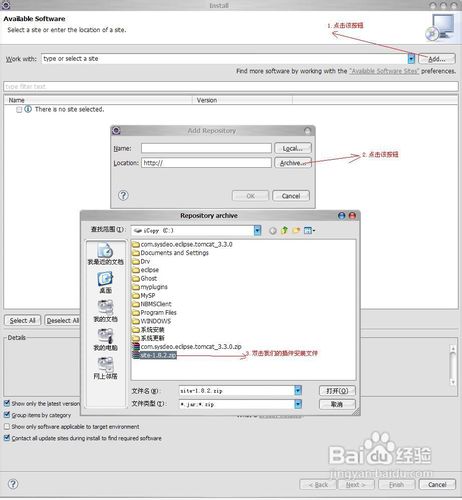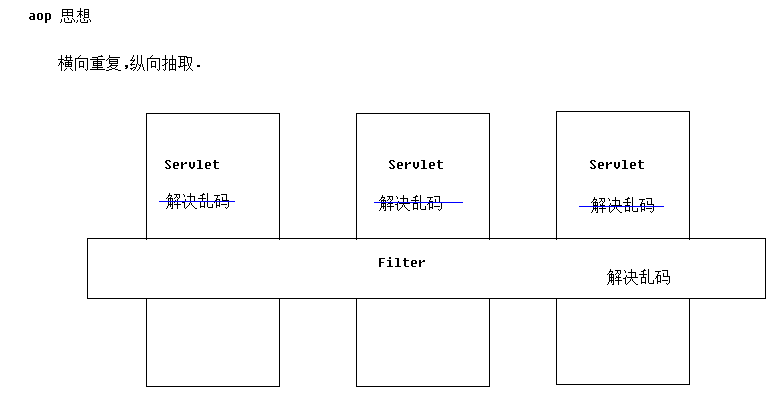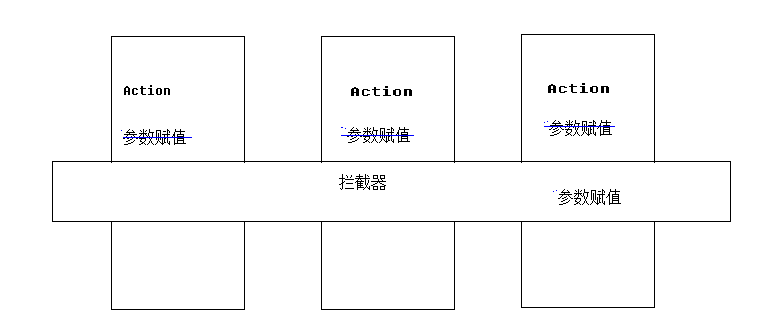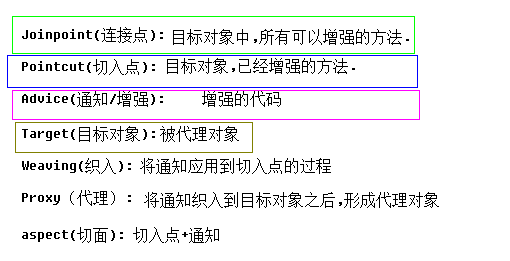Configuring spring with annotations
1. Steps
1.1 Guide 4+2+spring-aop
1.2 Introducing new namespaces (constraints) for the main configuration file
1.3 Turn on the use of annotations instead of configuration files
1.4 Configuration using annotations in classes
2. Register objects into containers
//<bean name="user" class="cn.itcast.bean.User" /> //@Component("user") // @Service("user") // service layer // @Controller("user") // web layer @Repository("user")// dao layer
3. Scope of Modifying Objects
//The scope of the specified object @Scope(scopeName="singleton")
4. Value type injection
The encapsulation is destroyed by reflective Field assignment:
@Value("tom")
private String name;
It is recommended to use the set method to assign values.
@Value("tom")
public void setName(String name) {
this.name = name;
}
5. Reference type injection
//@Autowired //automatic assembly //problem:If multiple objects of the same type are matched.You will not be able to choose which object to inject.. //@Qualifier("car2")//Use@Qualifier Annotate spring Containers automatically assemble objects of which name private Car car;
Recommendation:
@Resource(name="car")//Manual injection,Specify which name to inject into the object private Car car;
6. Initialization | Destruction Method
@PostConstruct //Called after an object is created.init-method public void init(){ System.out.println("I'm the initialization method.!"); } @PreDestroy //Called before destruction.destory-method public void destory(){ System.out.println("I'm the way to destroy it.!"); }
II. STS Plug-in
1. Manual Installation of Plug-ins (Low Success Rate)

Step 1:

Step 2:

Step 3:

2. Elipse to install plug-ins directly with spring

3. spring and junit Integration Testing
1. Guide 4+2+aop+test
2. Configuration Notes
//Help us create containers @RunWith(SpringJUnit4ClassRunner.class) //Specify which configuration file to use when creating containers @ContextConfiguration("classpath:applicationContext.xml") public class Demo { //Name it user Object injection into u Variable @Resource(name="user") private User u;
3. Testing
@Test public void fun1(){ System.out.println(u); }
4. aop in spring
1. Introduction to AOP



2. The concept of aop in spring

3. The Principle of Spring Implementing aop
3.1 Dynamic proxy (priority)
Proxy objects must implement interfaces in order to generate proxy objects. Without interfaces, dynamic proxy technology cannot be used.
3.2 cglib proxy (no interface)
Third-party proxy technology, cglib proxy, can generate proxy for any class. The principle of proxy is to inherit proxy for the target object. If the target object is modified by final, the class can not be proxyed by cglib.
4.aop noun learning

5. aop Demonstration in spring
1. Steps (xml configuration)
1.1 Guide 4+2
spring's aop package:
spring-aspects-4.2.4.RELEASE.jar
spring-aop-4.2.4.RELEASE.jar
spring requires third-party aop packages:
com.springsource.org.aopalliance-1.0.0.jar
com.springsource.org.aspectj.weaver-1.6.8.RELEASE.jar
1.2 Preparing target objects
public class UserServiceImpl implements UserService { @Override public void save() { System.out.println("Save user!"); //int i = 1/0; } @Override public void delete() { System.out.println("delete user!"); } @Override public void update() { System.out.println("Update user!"); } @Override public void find() { System.out.println("Find user!"); } }
1.3 Preparatory Notice
//Notification class public class MyAdvice { //Before advice // |-Called before the target method runs //after returning advise(If an exception occurs, it will not be called) // |-Called after the target method runs //Around Advice // |-Called before and after the target method //Abnormal interception notification // |-If an exception occurs,Would call //after returning advise(Called regardless of whether an exception occurs) // |-Called after the target method runs //---------------------------------------------------------------- //Before advice public void before(){ System.out.println("This is the advance notice.!!"); } //after returning advise public void afterReturning(){ System.out.println("This is a post notice.(If an exception occurs, it will not be called)!!"); } //Around Advice public Object around(ProceedingJoinPoint pjp) throws Throwable { System.out.println("This is the part before the circular notification.!!"); Object proceed = pjp.proceed();//Call the target method System.out.println("This is the part after the circular notification.!!"); return proceed; } //Exception notification public void afterException(){ System.out.println("Something happened.!There's an anomaly.!!"); } //after returning advise public void after(){ System.out.println("This is a post notice.(Exceptions will also be invoked)!!"); } }
1.4 configuration for weaving, weaving notifications into the target object
<?xml version="1.0" encoding="UTF-8"?> <beans xmlns:xsi="http://www.w3.org/2001/XMLSchema-instance" xmlns="http://www.springframework.org/schema/beans" xmlns:context="http://www.springframework.org/schema/context" xmlns:aop="http://www.springframework.org/schema/aop" xsi:schemaLocation="http://www.springframework.org/schema/beans http://www.springframework.org/schema/beans/spring-beans-4.2.xsd http://www.springframework.org/schema/context http://www.springframework.org/schema/context/spring-context-4.2.xsd http://www.springframework.org/schema/aop http://www.springframework.org/schema/aop/spring-aop-4.2.xsd "> <!-- Dead work: Import aop(constraint)Namespace --> <!-- 1.Configuring target objects --> <bean name="userService" class="cn.itcast.service.UserServiceImpl" ></bean> <!-- 2.Configuration Notification Object --> <bean name="myAdvice" class="cn.itcast.d_springaop.MyAdvice" ></bean> <!-- 3.Configuration weaves notifications into the target object --> <aop:config> <!-- Configuration entry point public void cn.itcast.service.UserServiceImpl.save() void cn.itcast.service.UserServiceImpl.save() * cn.itcast.service.UserServiceImpl.save() * cn.itcast.service.UserServiceImpl.*() * cn.itcast.service.*ServiceImpl.*(..) * cn.itcast.service..*ServiceImpl.*(..) --> <aop:pointcut expression="execution(* cn.itcast.service.*ServiceImpl.*(..))" id="pc"/> <aop:aspect ref="myAdvice" > <!-- Designated name is before Method as pre-notification --> <aop:before method="before" pointcut-ref="pc" /> <!-- Postposition --> <aop:after-returning method="afterReturning" pointcut-ref="pc" /> <!-- Around Advice --> <aop:around method="around" pointcut-ref="pc" /> <!-- Abnormal interception notification --> <aop:after-throwing method="afterException" pointcut-ref="pc"/> <!-- Postposition --> <aop:after method="after" pointcut-ref="pc"/> </aop:aspect> </aop:config> </beans>
2. Steps (Annotation Configuration)
The previous steps 1, 2, 3 are the same as the xml configuration
2.4 configuration for weaving, weaving notifications into the target object
applicationContext.xml:
<?xml version="1.0" encoding="UTF-8"?> <beans xmlns:xsi="http://www.w3.org/2001/XMLSchema-instance" xmlns="http://www.springframework.org/schema/beans" xmlns:context="http://www.springframework.org/schema/context" xmlns:aop="http://www.springframework.org/schema/aop" xsi:schemaLocation="http://www.springframework.org/schema/beans http://www.springframework.org/schema/beans/spring-beans-4.2.xsd http://www.springframework.org/schema/context http://www.springframework.org/schema/context/spring-context-4.2.xsd http://www.springframework.org/schema/aop http://www.springframework.org/schema/aop/spring-aop-4.2.xsd "> <!-- Dead work: Import aop(constraint)Namespace --> <!-- 1.Configuring target objects --> <bean name="userService" class="cn.itcast.service.UserServiceImpl" ></bean> <!-- 2.Configuration Notification Object --> <bean name="myAdvice" class="cn.itcast.e_annotationaop.MyAdvice" ></bean> <!-- 3.Open and complete weaving with annotations --> <aop:aspectj-autoproxy></aop:aspectj-autoproxy> </beans>
Notification category:
//Notification class @Aspect //Represents that this class is a notification class public class MyAdvice { @Pointcut("execution(* cn.itcast.service.*ServiceImpl.*(..))") public void pc(){} //Before advice //Specify that this method is a pre-notification,And develop entry points @Before("MyAdvice.pc()") public void before(){ System.out.println("This is the advance notice.!!"); } //after returning advise @AfterReturning("execution(* cn.itcast.service.*ServiceImpl.*(..))") public void afterReturning(){ System.out.println("This is a post notice.(If an exception occurs, it will not be called)!!"); } //Around Advice @Around("execution(* cn.itcast.service.*ServiceImpl.*(..))") public Object around(ProceedingJoinPoint pjp) throws Throwable { System.out.println("This is the part before the circular notification.!!"); Object proceed = pjp.proceed();//Call the target method System.out.println("This is the part after the circular notification.!!"); return proceed; } //Exception notification @AfterThrowing("execution(* cn.itcast.service.*ServiceImpl.*(..))") public void afterException(){ System.out.println("Something happened.!There's an anomaly.!!"); } //after returning advise @After("execution(* cn.itcast.service.*ServiceImpl.*(..))") public void after(){ System.out.println("This is a post notice.(Exceptions will also be invoked)!!"); } }